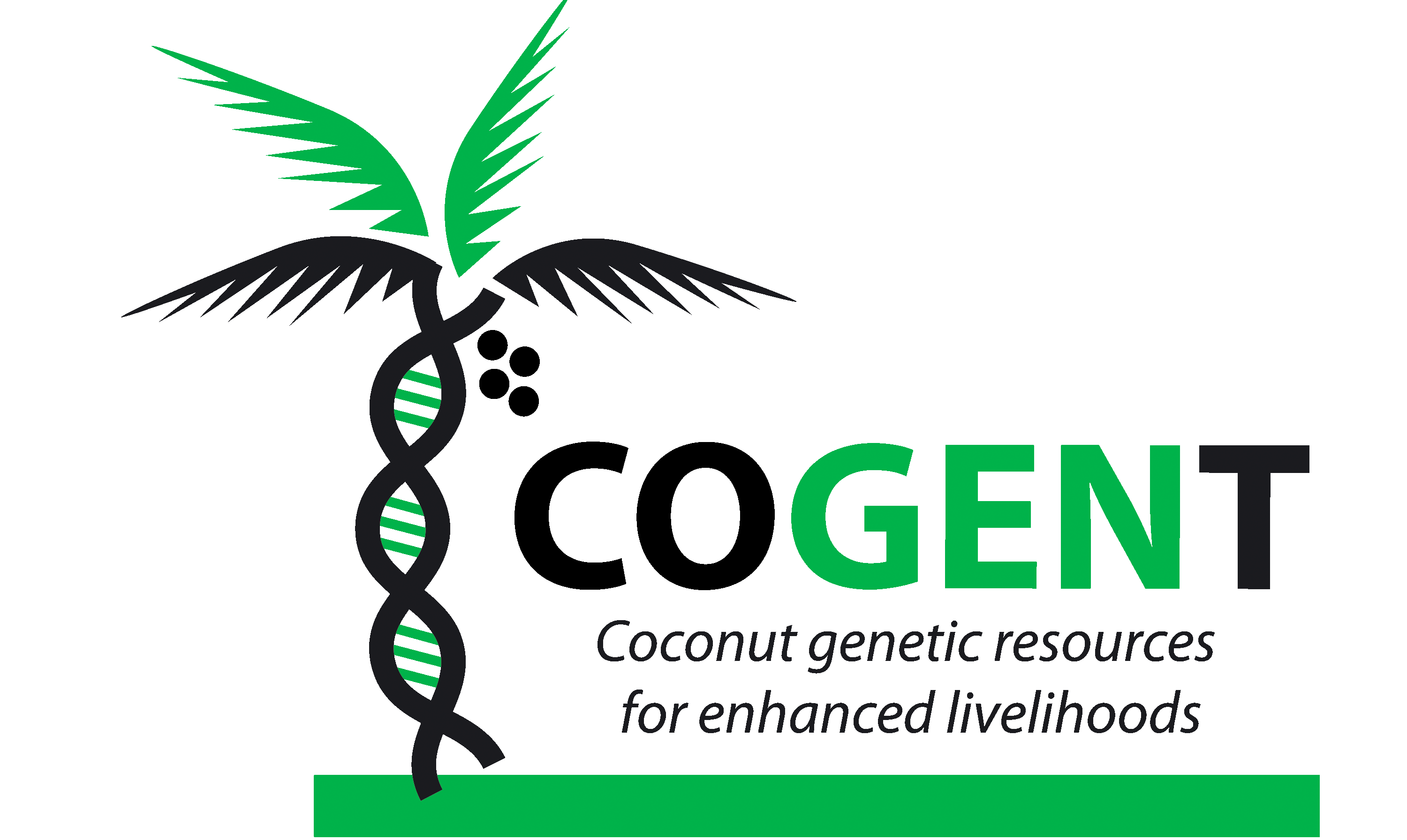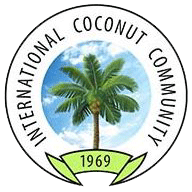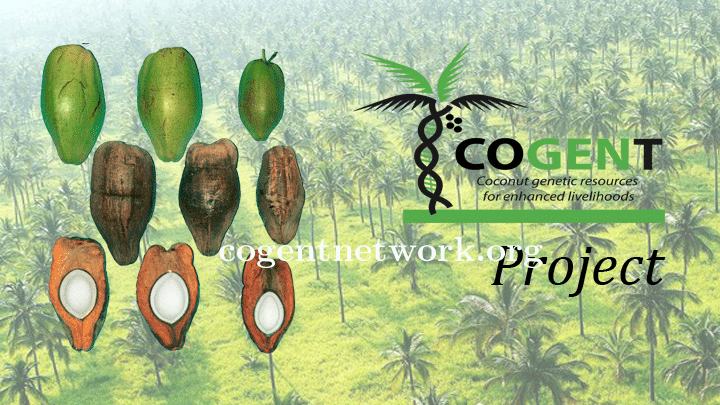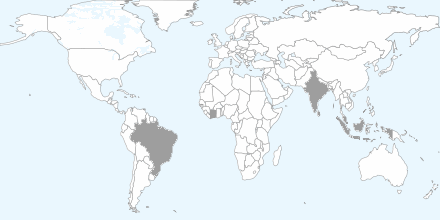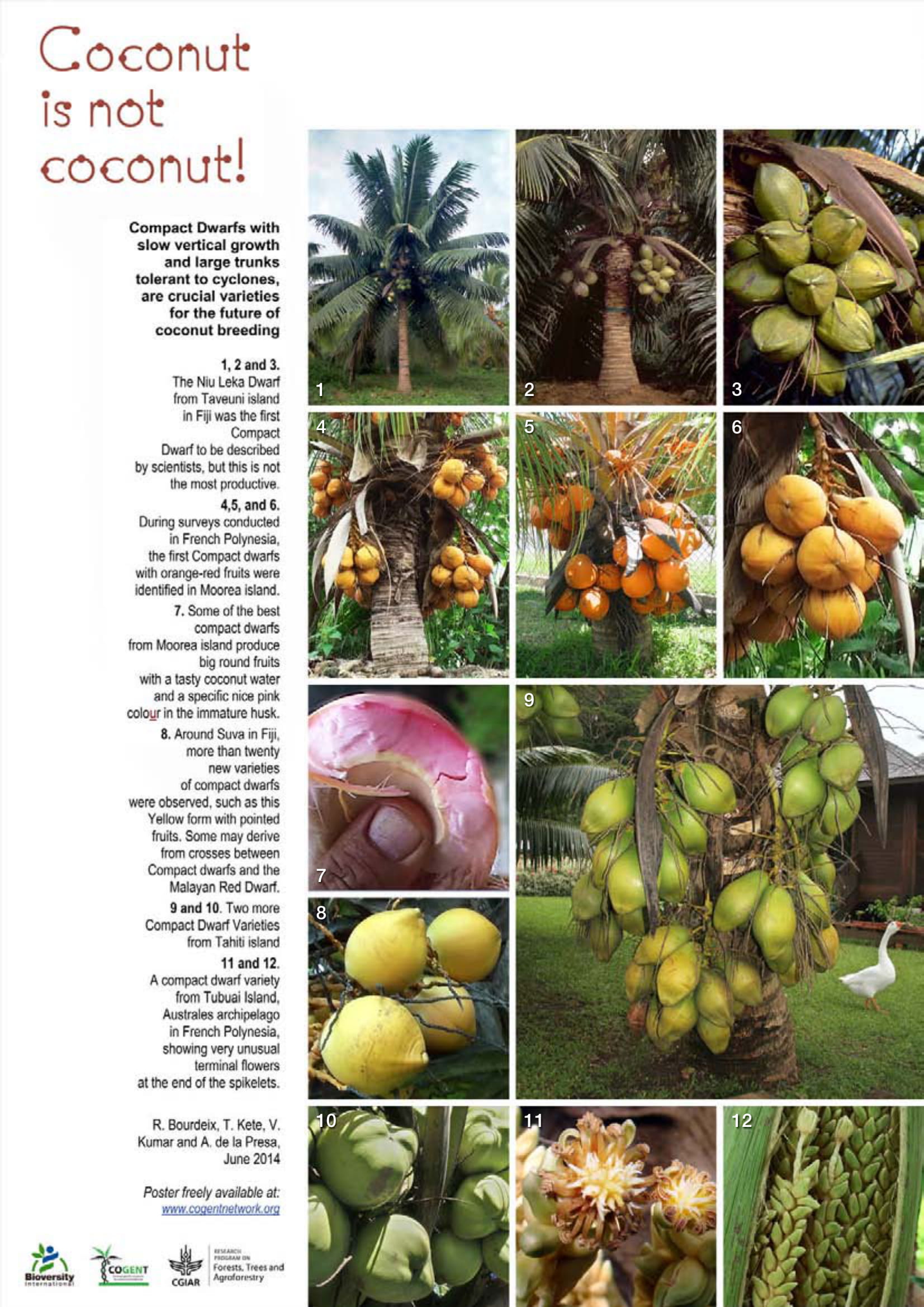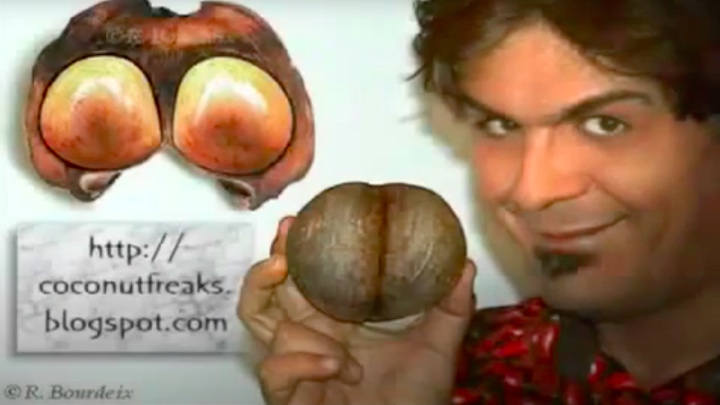Background, overview and objectivesDuring a network meeting in 2009, one of the main limiting factors of updating the Global Coconut Conservation Strategy process was identified as "making decisions with incomplete or obsolete information". Indeed, Over the last decade, not enough information has been shared among the COGENT coconut genebanks. Thus, there is no overview of which accessions are still viable, what new germplasm has been collected, and which germplasm has been lost during the last 10-year period. The first step towards refining the conservation strategy is to update and analyze the data about the current status of world coconut germplasm. This survey needs to be conducted not only on the germplasm conserved, but also on the techniques used to conserve and to reproduce this germplasm, and on the cost of conservation. Between 1992 and 2002, the Coconut Genetic Resources Database (CGRD) was developed to manage and disseminate information about the accessions in the COGENT genebanks. Presently, 1459 coconut accessions from 28 collecting sites in 23 countries are recorded in the database. The database includes 79 passport descriptors, 121 evaluation descriptors and 9 molecular marker (microsatellites) descriptors. Development and management of the CGRD database was stopped in 2003 when funding was no longer available for this activity. Except for the Côte d’Ivoire genebank, the data were not updated. For 84% of the accessions, the latest inventories of the palms recorded in the CGRD date back 11 years or more. Many palms may have disappeared since that time. Characterization data stored in the CGRD database were never comparatively analyzed. The viability and integrity of accessions worldwide needs to be urgently assessed. Around half of the global coconut accessions are more than 25 years old. At 25 to 30 years old, palms grow up to 15m high. The inflorescences become almost impossible to reach for controlled pollination. Also some countries are forced to regenerate their accessions using open pollination, because of a lack of equipment, expertise and funding. The aim of the project: The project is funded by the Global Crop Diversity Trust, and operating in 5 International Coconut genebank (Brazil, Côte d’Ivoire, Indonesia, India and the Papua New Guinea) and with the collaboration of the CRI the project aims to : - Update and analyse the germplasm data from 6 major coconut genebanks, namely Brazil, Côte d’Ivoire, Indonesia, India, Malaysia and Sri Lanka; and revitalize the network in order to obtain data from other country members.
- Improve the software “Coconut Genetic Resources Database” which is presently downloadable
- Make the germplasm data available online on the COGENT website and through the GENESYS portal.
- Design a standard procedure for assessing the quality and viability of accessions conserved in coconut genebanks.
- Launch the process for updating the Global Coconut Conservation Strategy.
|
 America/New_York
About UsNewsletterLogin
America/New_York
About UsNewsletterLogin
 United States
United States